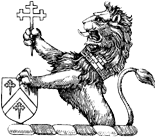
Gorbachev & the Decomposition of Communism: The Chickens Come Home to Roost
PROMISES & PROBLEMS OF REFORM
That 1988 would see Ronald Reagan (who is to anti-Communism what the Ayatollah is to anti-Americanism) put his arm around Mikhail Gorbachev in Red Square for all the world to see and call him his friend was one of the great reversals in American political history. And that Reagan also absolved the U.S.S.R. of being the Evil Empire was about as shocking as hearing tomorrow that the Ayatollah has absolved America of being the Great Satan. Under these circumstances, it would be hard for anyone to the left of Joe McCarthy to contend that glasnost and perestroika are but diabolical Commie tricks.
Significant changes are under way in the Soviet Union. Of course, we all know that the reformist surge of the Gorbachev government is in response to the sluggishness and inefficiency of the Soviet economy. But I suspect the economic malaise goes much deeper than the vagaries of centralized planning in an advanced industrial economy — which we’ve been hearing so much about — and can in large measure be traced to the unresolvable contradictions of Communism as such — particularly as a mobilization ideology and system.
According to Marxist-Leninist theory, the Party is the brain and revolutionary conscience of the proletariat. Because the masses allegedly cannot see the big picture and quickly grow weary, the Party exists to mobilize the people in approved directions. A Communist society is not one where people are left to do whatever they please. No, they are “educated” and energized for common purposes.
This is why Communist societies, especially in their youth, have the feel of boot camps or monasteries. They exude a sense of discipline, austerity, and heroic endeavor — in stark contrast to the frivolous self-indulgence and cynicism so apparent in Western consumerist societies.
You May Also Enjoy
I am going to state my views in provocative form, in the hope of stimulating…
In recent years Croatia has received much attention in the Western press for its politics…
Rotterdam — Saturday, July 24, 1993
Today I start my Ukrainian diary. On August 1,…

